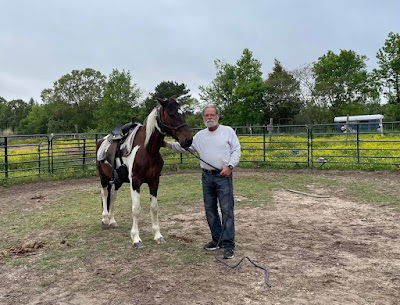For fourteen years this blog has chronicled the work that we do in our program. During the earliest years we were simply a for profit operation that never put a profit ahead of a person. We became a breed conservation non-profit and eventually we formed a 501 (c) 3 educational non-profit, The Gwaltney Frontier Farm Educational Foundation. We grew in our scope and in our scale. The virus slowed our growth but did not kill us.
My daughter, Amanda, has had the blog printed in hard cover each year and the bound copies are even more important than our permanent cyber print. Several people have read the entire blog, all of the years, all of the posts, all of the pictures--can take a while to do that, but it took quite a while to write them. It took fourteen years to live them.
I soon turn 63 and as I age I recognize the importance of reaching more people with the simple message of what our program does and how they can build one like it. Just as we are moving into a post truth culture, I fear that we are moving into a post literacy culture. Intellectual weakness can be simply dismissed with the excuse of "TLDR".
In January we will continue this blog, but as a video blog to be seen on you tube. The links to each vlog post will be on our face book page and will be easy to see and to share.
The printed version could not be ending on a better note.
Yesterday was our Christmas ride and social event at the horse lot. There were many individual accomplishments and family ties strengthened as generations were drawn together. So very much good went on yesterday that I will not even consider cataloguing all of them. But there were two things that make waking up worth the effort.
A young man, who had once vowed to never do so, mounted up. Some lucky few of you reading this understand what a big deal this is. Some even luckier, even fewer, of you have had the opportunity to share this experience with a young person.
And those very lucky, very few, people will understand why I am so happy to end the written history of this blog with this story.
She is big enough to walk around athletically and old enough so that I understand several words from each sentence that she excitedly says. I was not quite able to understand as she told me who she was dressed as for the event (She was the "Spirit of Christmas."). Her oldest sister lead her on the trail that was so beautifully lined with Christmas decorations. Half way through, the little Corolla mare spooked and the Spirit of Christmas hit the ground. She got up and her big sister told me that she was fine and we moved out again. We had a lot of riders and walkers on this special ride. I walked up front and when I got back to the tack shed I saw the little Corolla mare being lead in without a rider. I am sure that I looked a bit concerned.
Her big sister quickly told me, "She's fine. She wanted to get back on and she just got cold on the ride."
About a hundred yards behind I saw her coming in. She was bundled in the arms of the father of two of my riders. He had carried her in for the last portion of the ride. He sat her on the ground and the Spirit of Christmas came over to see me. She wanted to let me know that she was fine and that she was not afraid to get back on.
She looked up and told me, "It's just that I got cold. That's all."




















.jpg)













